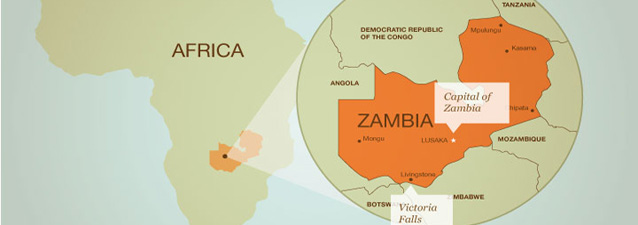Background
The territory of Northern Rhodesia was administered by the South Africa Company from 1891 until it was taken over by the UK in 1923. During the 1920s and 1930s, advances in mining spurred development and immigration. The name was changed to Zambia upon independence in 1964. In the 1980s and 1990s, declining copper prices and a prolonged drought hurt the economy. Elections in 1991 brought an end to one-party rule, but the subsequent vote in 1996 saw blatant harassment of opposition parties. The election in 2001 was marked by administrative problems with three parties filing a legal petition challenging the election of ruling party candidate Levy MWANAWASA. The new president launched a far-reaching anti-corruption campaign in 2002, which resulted in the 2003 arrest of the previous president Frederick CHILUBA and many of his supporters. Mwanawasa presided over the country from January 2002 until his death in August 2008. Mwanawasa is credited with initiating a campaign to rid the country of corruption and increasing the standard of living from those left by his predecessor. After Mwanawasa’s death, Rupiah Banda presided as Acting President before being elected president in 2008, he is the shortest serving president having held office for only three years. Patriotic Front party leader, Michael Chilufya Sata defeated Banda in the 2011 elections. In 2010, the World Bank named Zambia one of the world’s fastest economically reformed countries. The Common Market for Eastern and Southern Africa is headquartered in the capital Lusaka.
Population: 10,307,333
Location: Southern Africa, east of Angola
Climate: tropical; modified by altitude; rainy season (October to April)
Religions: Christian 50%-75%, Muslim and Hindu 24%-49%, indigenous beliefs 1%
Languages: English (official), major vernaculars – Bemba, Kaonda, Lozi, Lunda, Luvale, Nyanja, Tonga, and about 70 other indigenous languages
Economy: Despite progress in privatization and budgetary reform, Zambia’s economic growth remains below the 5% to 7% necessary to reduce poverty significantly. Privatization of government-owned copper mines relieved the government from covering mammoth losses generated by the industry and greatly improved the chances for copper mining to return to profitability and spur economic growth. However, low mineral prices have slowed the benefits of privatizing the mines and have reduced incentives for further private investment in the sector. Cooperation continues with international bodies on programs to reduce poverty.
HIV/AIDS: Adult prevalence rate: 21.5% (2001 est.) People living with HIV/AIDS: 1.2 million (2001 est.)






